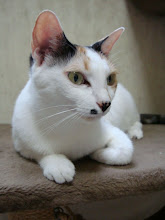abstract
We propose a critical review of existing tools and practices typically used to execute the proverbial site visit, followed by focused invention and development of new tools and practices. We argue that conventional methods to study, document and interact with a site are ill suited to capturing seen and unseen aspects that may remain hidden without enhanced aids to observation and visualization. By extension, these methods fundamentally distort the character and context of the design locus, and constrict the role that visualization can have for the duration of the design process.
Thrust by advancements in geo-spatial analysis, simulation modeling and mobile computing, our team of researchers and practitioners will collectively explore and test new practices for site visit, by developing situated visualizations — dynamic visual representations that are spatially relevant to the place in which they are displayed. The team’s transdisciplinary collaboration — from the fields of architecture, urban design, geography, planning, ethnography, industrial design and computer science — will be hands on, gaining insight into the notion of site and extending the role of visualization beyond initial documentation or final presentation in the design process.
Our research activities will focus on a 17-acre industrial district of New York City known as Manhattanville, in which rezoning efforts are raising disputes over land use, economic development, socio-cultural diversity and environmental stewardship. This area has also been declared the “site” for Columbia University’s campus expansion, for which preliminary design propositions have been publicized using various visualization strategies.
Experiments by members of our team have been conducted on this site using augmented reality (AR) techniques and Census datasets in order to generate situated visualizations about Manhattanville’s population. This past spring, these new practices were further explored in a workshop co-taught by architectural and computer science faculty.
Phase One of our proposed research will review and evaluate typical practices used for site visits and site analysis. Phase Two will illustrate the potential of new methods and technologies for collecting, curating and creating information as tools for site visualization. Phase Three will include developing and testing these methods against Manhattanville’s complex landscape. Phase Four will prepare a comprehensive account of innovative visualization tools for site visit and site analysis as important facilitators of the design process.
Team: Petia Morozov, Sean White, and Sarah Williams, all of whom have practices in our respective fields, and all of whom have an affiliation with Columbia University.

0 comments:
Post a Comment